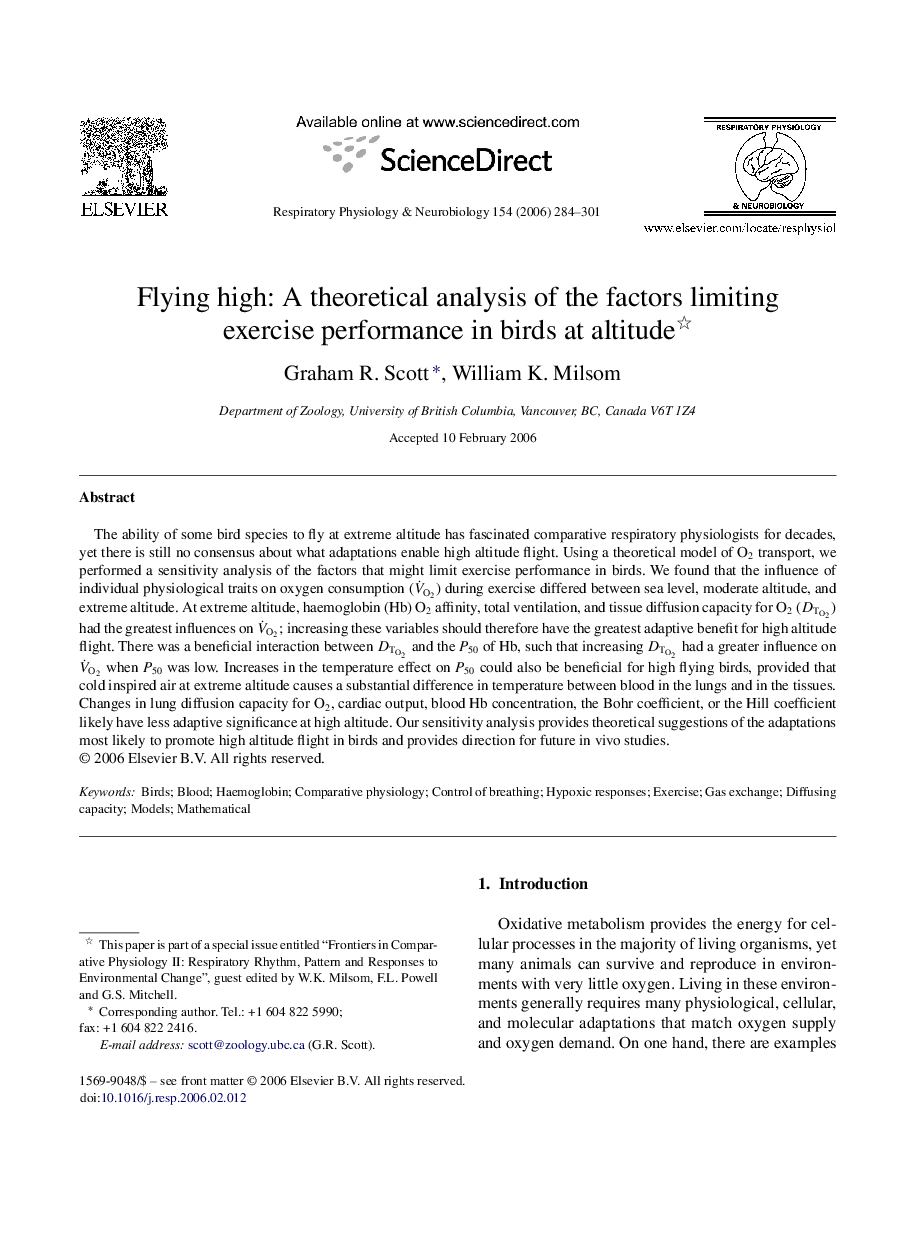| Article ID | Journal | Published Year | Pages | File Type |
|---|---|---|---|---|
| 2848647 | Respiratory Physiology & Neurobiology | 2006 | 18 Pages |
The ability of some bird species to fly at extreme altitude has fascinated comparative respiratory physiologists for decades, yet there is still no consensus about what adaptations enable high altitude flight. Using a theoretical model of O2 transport, we performed a sensitivity analysis of the factors that might limit exercise performance in birds. We found that the influence of individual physiological traits on oxygen consumption (V˙O2) during exercise differed between sea level, moderate altitude, and extreme altitude. At extreme altitude, haemoglobin (Hb) O2 affinity, total ventilation, and tissue diffusion capacity for O2 (DTO2DTO2) had the greatest influences on V˙O2; increasing these variables should therefore have the greatest adaptive benefit for high altitude flight. There was a beneficial interaction between DTO2DTO2 and the P50 of Hb, such that increasing DTO2DTO2 had a greater influence on V˙O2 when P50 was low. Increases in the temperature effect on P50 could also be beneficial for high flying birds, provided that cold inspired air at extreme altitude causes a substantial difference in temperature between blood in the lungs and in the tissues. Changes in lung diffusion capacity for O2, cardiac output, blood Hb concentration, the Bohr coefficient, or the Hill coefficient likely have less adaptive significance at high altitude. Our sensitivity analysis provides theoretical suggestions of the adaptations most likely to promote high altitude flight in birds and provides direction for future in vivo studies.
